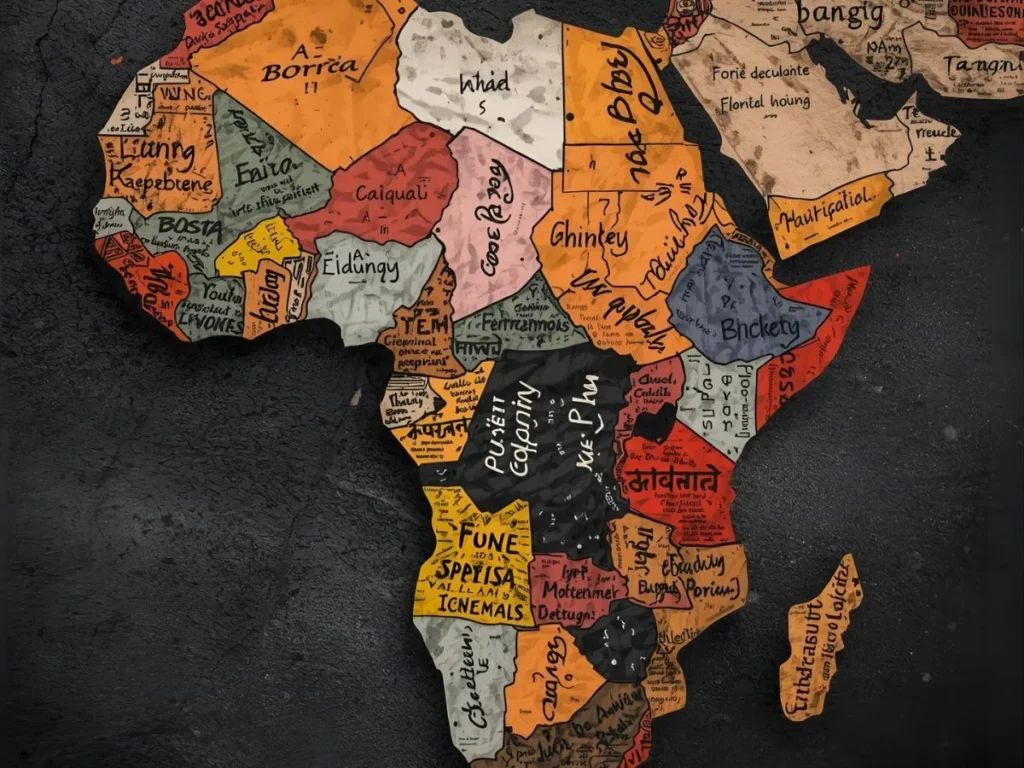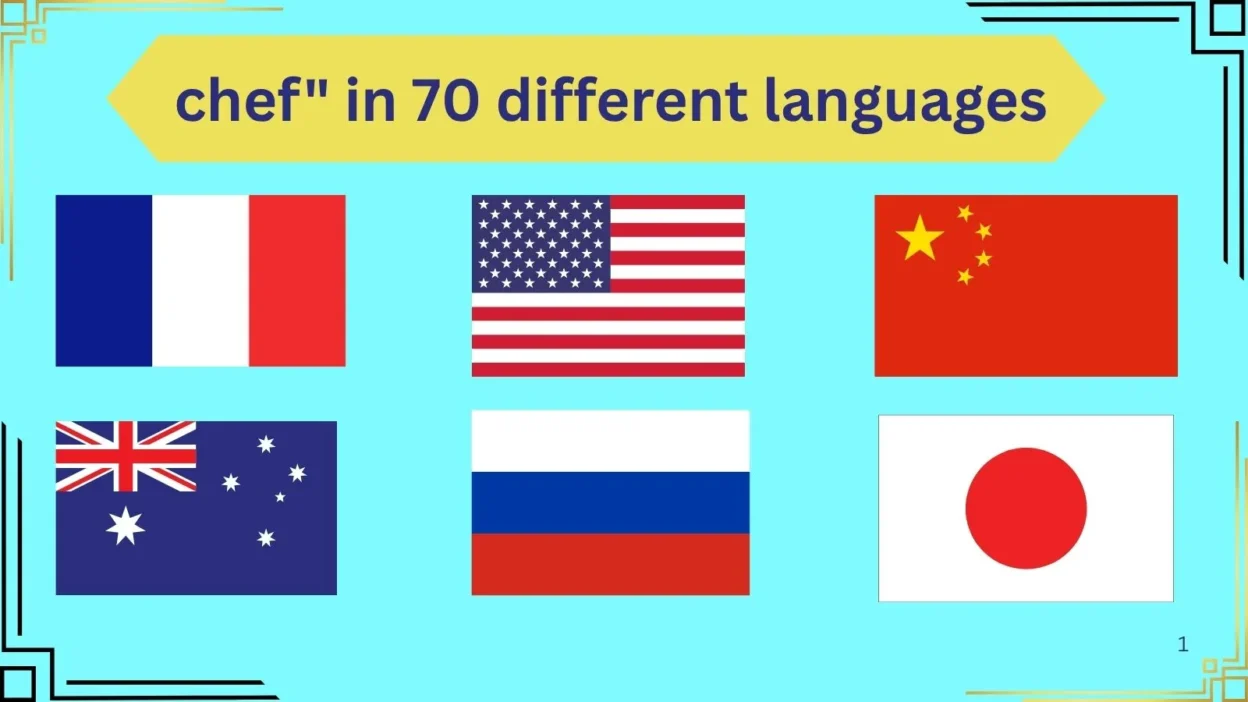If you’re learning English and come across the word “chef,” you might wonder what makes a chef different from a regular cook. A chef is a professional who is trained and skilled in cooking, often responsible for creating recipes and managing a kitchen in a restaurant.
Sometimes learners confuse “chef” with “cook,” but a chef usually has more experience, education, and leadership roles. Understanding this word will help you talk about food, cooking careers, and restaurants with more confidence.
Chef in other languages

The word “chef” comes from French, meaning chief or head, specifically referring to the head cook in a kitchen.
In Spanish, “chef” remains the same, though cocinero jefe can also be used.
In Italian, it’s often “cuoco” or “chef di cucina.”
In German, the word is “Koch” (male) or “Köchin” (female).
In Japanese, it’s “シェフ” (shefu), borrowed directly from French.
European Languages

- Afrikaans – sjef
- Albanian – kuzhinier
- Basque – sukaldari
- Belarusian – кухар (kukhar)
- Bosnian – kuhar
- Bulgarian – готвач (gotvach)
- Catalan – xef
- Croatian – kuhar
- Czech – šéfkuchař
- Danish – kok
- Dutch – chef-kok
- Estonian – kokk
- Finnish – kokki
- French – chef (cuisinier)
- Galician – cociñeiro
- German – Koch / Küchenchef
- Greek – σεφ (shef) / μάγειρας (mágiras)
- Hungarian – séf
- Icelandic – kokkur
- Irish – príomhchócaire
- Italian – chef / cuoco
- Latvian – šefpavārs
- Lithuanian – virėjas
- Macedonian – главен готвач (glaven gotvach)
- Maltese – chef
- Norwegian – kokk / sjefkokk
- Polish – szef kuchni
- Portuguese – chefe de cozinha
- Romanian – bucătar-șef
- Russian – шеф-повар (shef-povar)
- Serbian – кувар (kuvar)
- Slovak – šéfkuchár
- Slovenian – kuhar
- Spanish – chef / cocinero
- Swedish – kock
- Ukrainian – шеф-кухар (shef-kukhar)
- Welsh – prif gogydd
Asian Languages

- Arabic – طاهٍ (ṭāhin) / شيف (shef)
- Armenian – խոհարար (khorharar)
- Azerbaijani – aşpaz
- Bengali – শেফ (sheph)
- Burmese – စားဖိုမှူး (sahpohmu)
- Chinese (Mandarin) – 厨师长 (chúshīzhǎng)
- Filipino (Tagalog) – chef / punong tagapagluto
- Georgian – შეფ-მზარეული (shep-mzareuli)
- Hindi – शेफ (shef)
- Indonesian – koki / juru masak
- Japanese – シェフ (shefu) / 料理長 (ryōrichō)
- Kannada – ಶೆಫ್ (sheph)
- Kazakh – аспазшы (aspazshy)
- Khmer – ចុងភៅធំ (chong phov thom)
- Korean – 셰프 (syepeu) / 주방장 (jubangjang)
- Kurdish – aşpêj
- Malayalam – ഷെഫ് (sheph)
- Marathi – शेफ (sheph)
- Mongolian – тогооч (togooč)
- Nepali – शेफ (sheph)
- Persian (Farsi) – سرآشپز (sar-āshpaz)
- Punjabi – ਸ਼ੈੱਫ (shef)
- Sinhala – මුල්ලාලි (mullāli)
- Tamil – சமையல்காரர் (samayalkārar)
- Telugu – షెఫ్ (sheph)
- Thai – เชฟ (chef) / หัวหน้าพ่อครัว (h̄ạw h̄̂ā ph̀x khruā)
- Turkish – şef aşçı
- Urdu – شیف (shef)
- Uzbek – oshpaz
- Vietnamese – đầu bếp
African Languages

- Hausa – shugaban girki
- Swahili – mpishi mkuu
- Zulu – umpheki
Would you like any variations (e.g., “head chef” or “cook”) in specific languages? 😊
intro and conclusuion
The word “chef” represents culinary expertise and leadership in the kitchen, but it varies across languages and cultures. Whether you’re a food enthusiast, a traveler, or a language learner, knowing how to say “chef” in different languages can be fascinating. This list covers 70 translations, from European to Asian and African languages, showcasing the rich diversity in how we refer to master cooks worldwide.Here’s how to say “chef” in 70 different languages:
If you’re learning English and come across the word “chef,” you might wonder what makes a chef different from a regular cook. A chef is a professional who is trained and skilled in cooking, often responsible for creating recipes and managing a kitchen in a restaurant. Sometimes learners confuse “chef” with “cook,” but a chef usually has more experience, education, and leadership roles. Understanding this word will help you talk about food, cooking careers, and restaurants with more confidence.
European Languages

- Afrikaans – sjef
- Albanian – kuzhinier
- Basque – sukaldari
- Belarusian – кухар (kukhar)
- Bosnian – kuhar
- Bulgarian – готвач (gotvach)
- Catalan – xef
- Croatian – kuhar
- Czech – šéfkuchař
- Danish – kok
- Dutch – chef-kok
- Estonian – kokk
- Finnish – kokki
- French – chef (cuisinier)
- Galician – cociñeiro
- German – Koch / Küchenchef
- Greek – σεφ (shef) / μάγειρας (mágiras)
- Hungarian – séf
- Icelandic – kokkur
- Irish – príomhchócaire
- Italian – chef / cuoco
- Latvian – šefpavārs
- Lithuanian – virėjas
- Macedonian – главен готвач (glaven gotvach)
- Maltese – chef
- Norwegian – kokk / sjefkokk
- Polish – szef kuchni
- Portuguese – chefe de cozinha
- Romanian – bucătar-șef
- Russian – шеф-повар (shef-povar)
- Serbian – кувар (kuvar)
- Slovak – šéfkuchár
- Slovenian – kuhar
- Spanish – chef / cocinero
- Swedish – kock
- Ukrainian – шеф-кухар (shef-kukhar)
- Welsh – prif gogydd
Asian Languages

- Arabic – طاهٍ (ṭāhin) / شيف (shef)
- Armenian – խոհարար (khorharar)
- Azerbaijani – aşpaz
- Bengali – শেফ (sheph)
- Burmese – စားဖိုမှူး (sahpohmu)
- Chinese (Mandarin) – 厨师长 (chúshīzhǎng)
- Filipino (Tagalog) – chef / punong tagapagluto
- Georgian – შეფ-მზარეული (shep-mzareuli)
- Hindi – शेफ (shef)
- Indonesian – koki / juru masak
- Japanese – シェフ (shefu) / 料理長 (ryōrichō)
- Kannada – ಶೆಫ್ (sheph)
- Kazakh – аспазшы (aspazshy)
- Khmer – ចុងភៅធំ (chong phov thom)
- Korean – 셰프 (syepeu) / 주방장 (jubangjang)
- Kurdish – aşpêj
- Malayalam – ഷെഫ് (sheph)
- Marathi – शेफ (sheph)
- Mongolian – тогооч (togooč)
- Nepali – शेफ (sheph)
- Persian (Farsi) – سرآشپز (sar-āshpaz)
- Punjabi – ਸ਼ੈੱਫ (shef)
- Sinhala – මුල්ලාලි (mullāli)
- Tamil – சமையல்காரர் (samayalkārar)
- Telugu – షెఫ్ (sheph)
- Thai – เชฟ (chef) / หัวหน้าพ่อครัว (h̄ạw h̄̂ā ph̀x khruā)
- Turkish – şef aşçı
- Urdu – شیف (shef)
- Uzbek – oshpaz
- Vietnamese – đầu bếp
African Languages

- Hausa – shugaban girki
- Swahili – mpishi mkuu
- Zulu – umpheki
Would you like any variations (e.g., “head chef” or “cook”) in specific languages? 😊
The word “chef” represents culinary expertise and leadership in the kitchen, but it varies across languages and cultures. Whether you’re a food enthusiast, a traveler, or a language learner, knowing how to say “chef” in different languages can be fascinating. This list covers 70 translations, from European to Asian and African languages, showcasing the rich diversity in how we refer to master cooks worldwide.
Conclusion
Language reflects culture, and the many ways to say “chef” highlight the universal appreciation for skilled cooking. From French “chef” to Japanese “シェフ (shefu)” and Swahili “mpishi mkuu,” each term carries its own flavor. Whether you’re dining abroad or exploring global cuisines, this list helps bridge language barriers in the culinary world. Bon appétit—or should we say, “享受美食” (Chinese), “आनंद घ्या” (Marathi), or “صحة وهنا” (Arabic)! 🍽️



